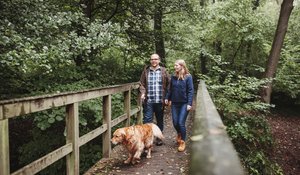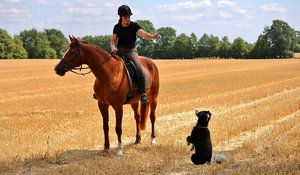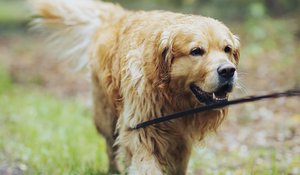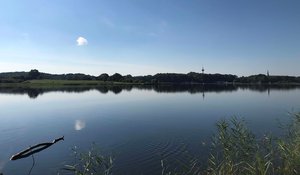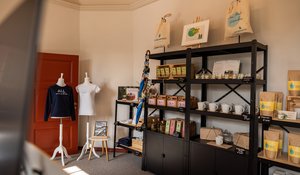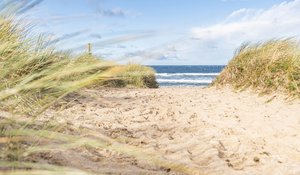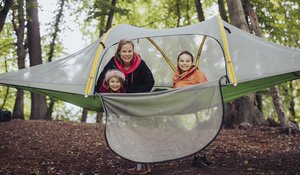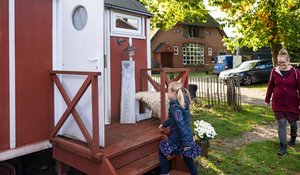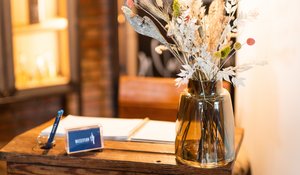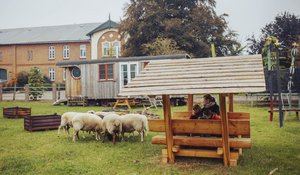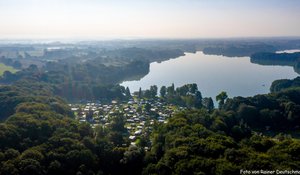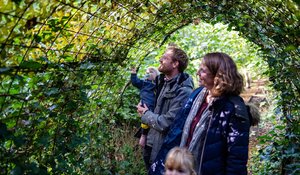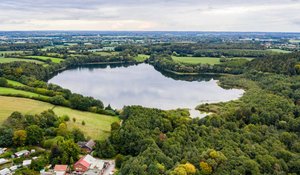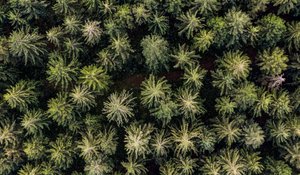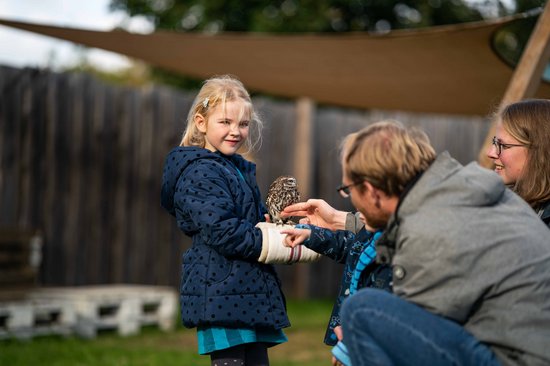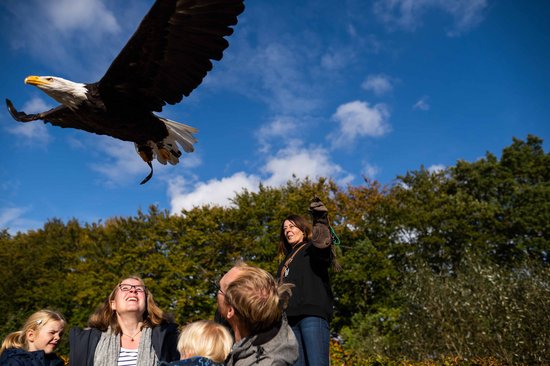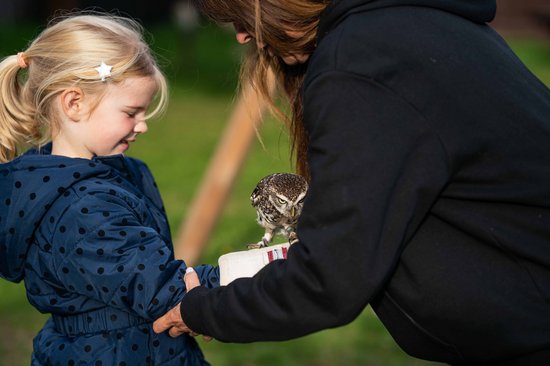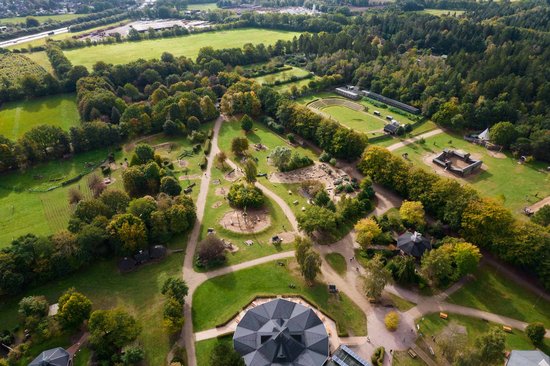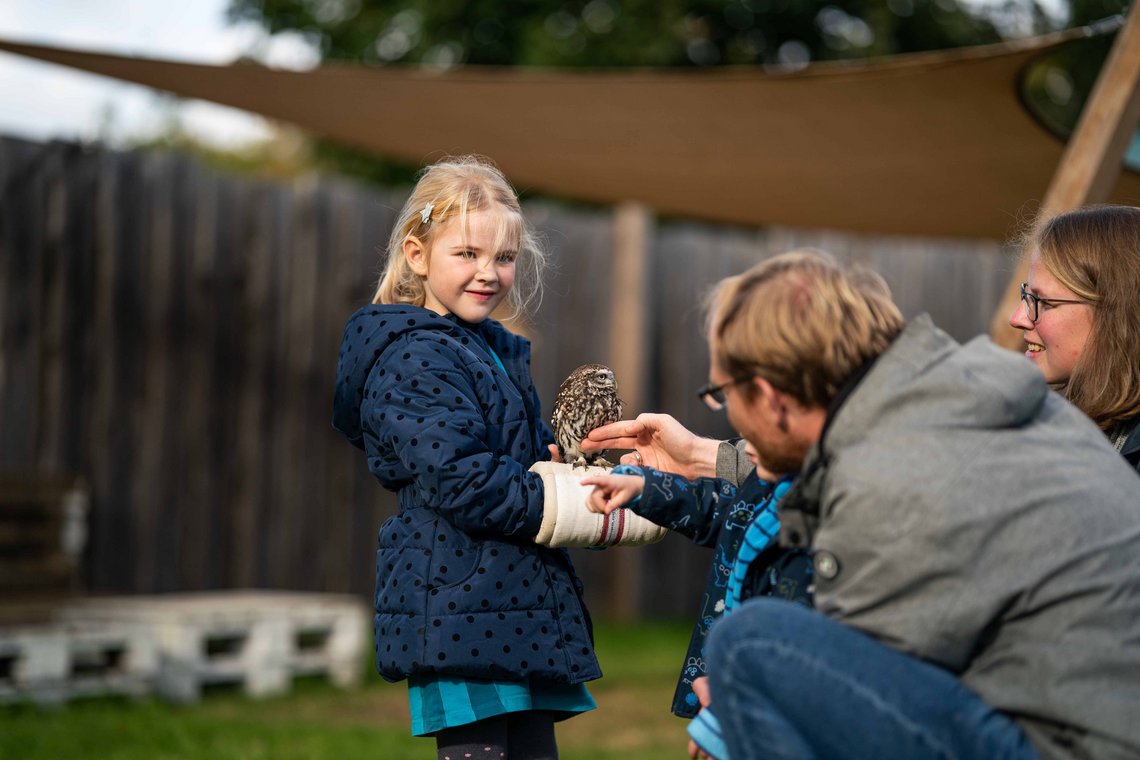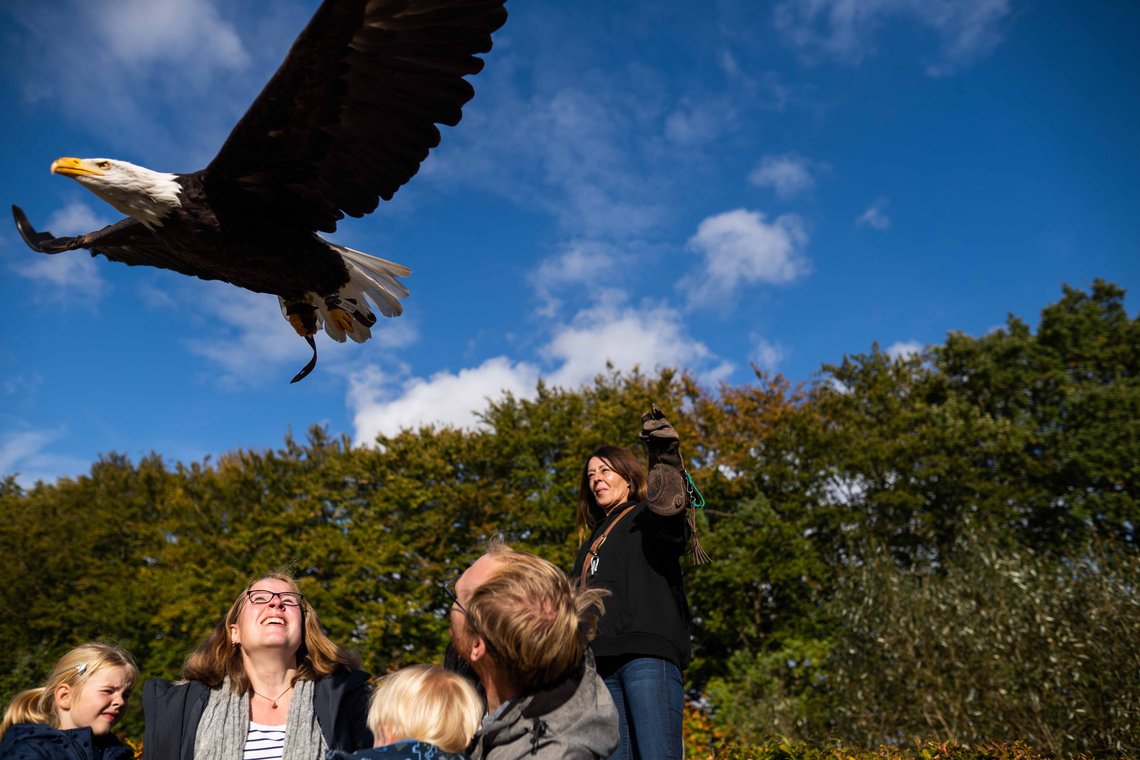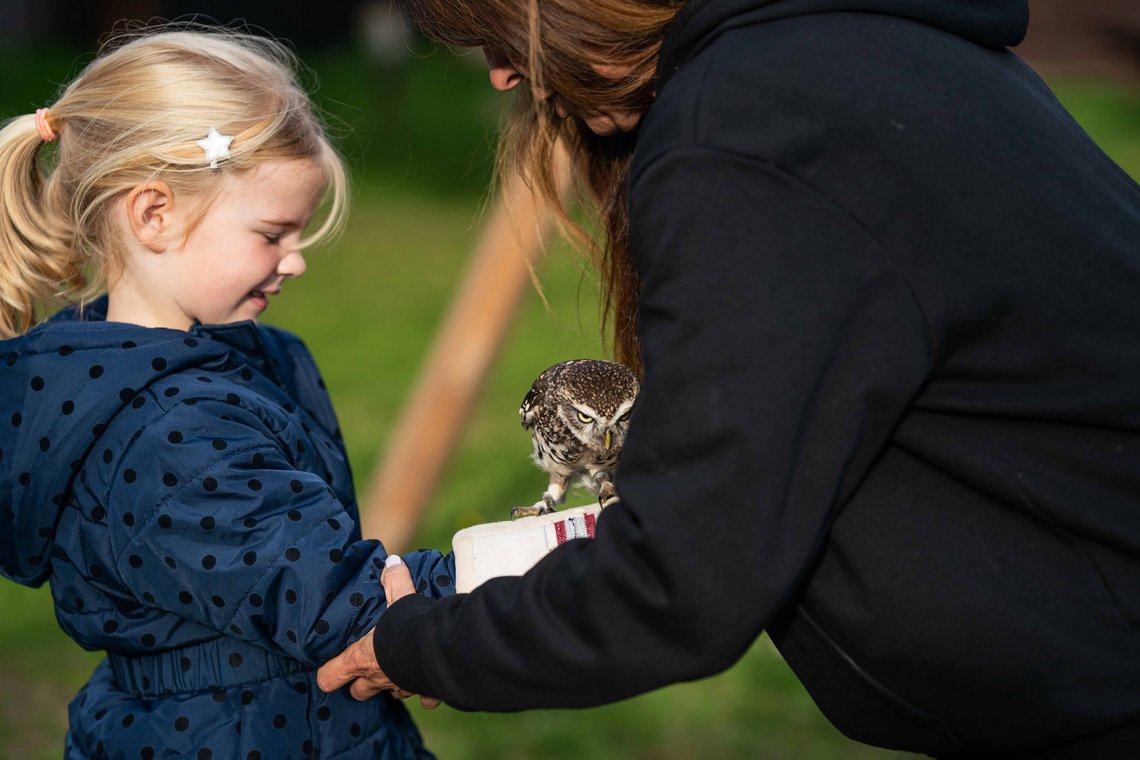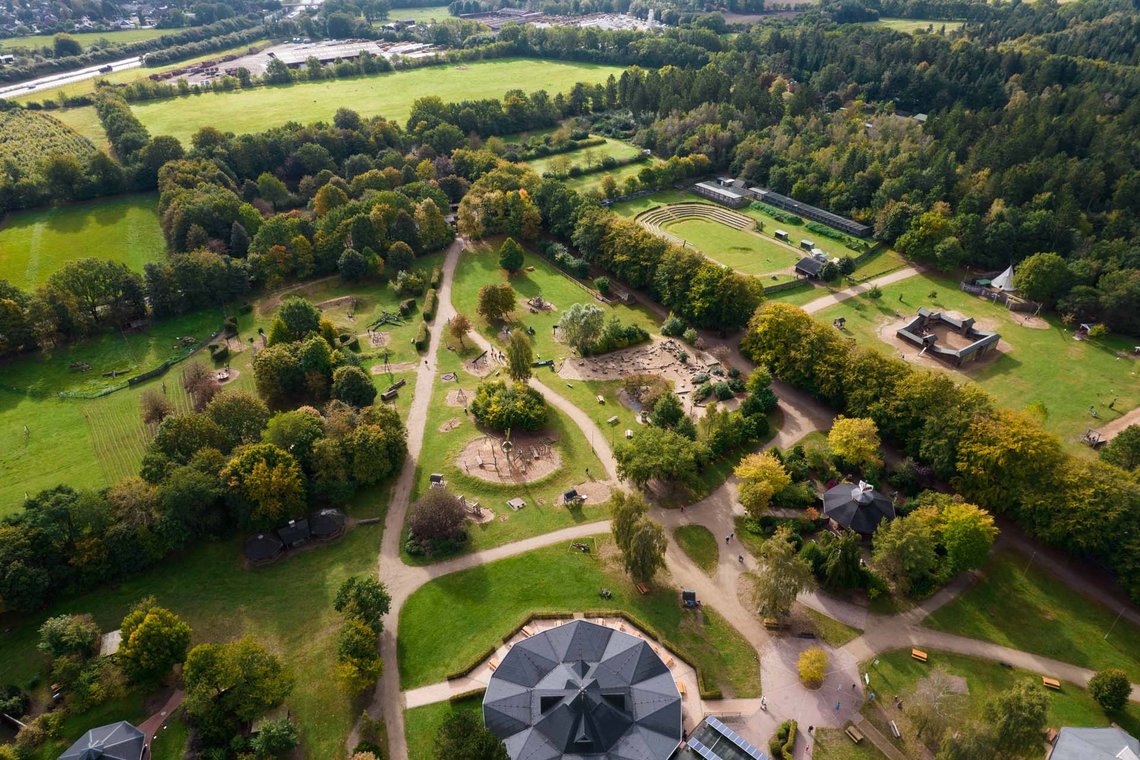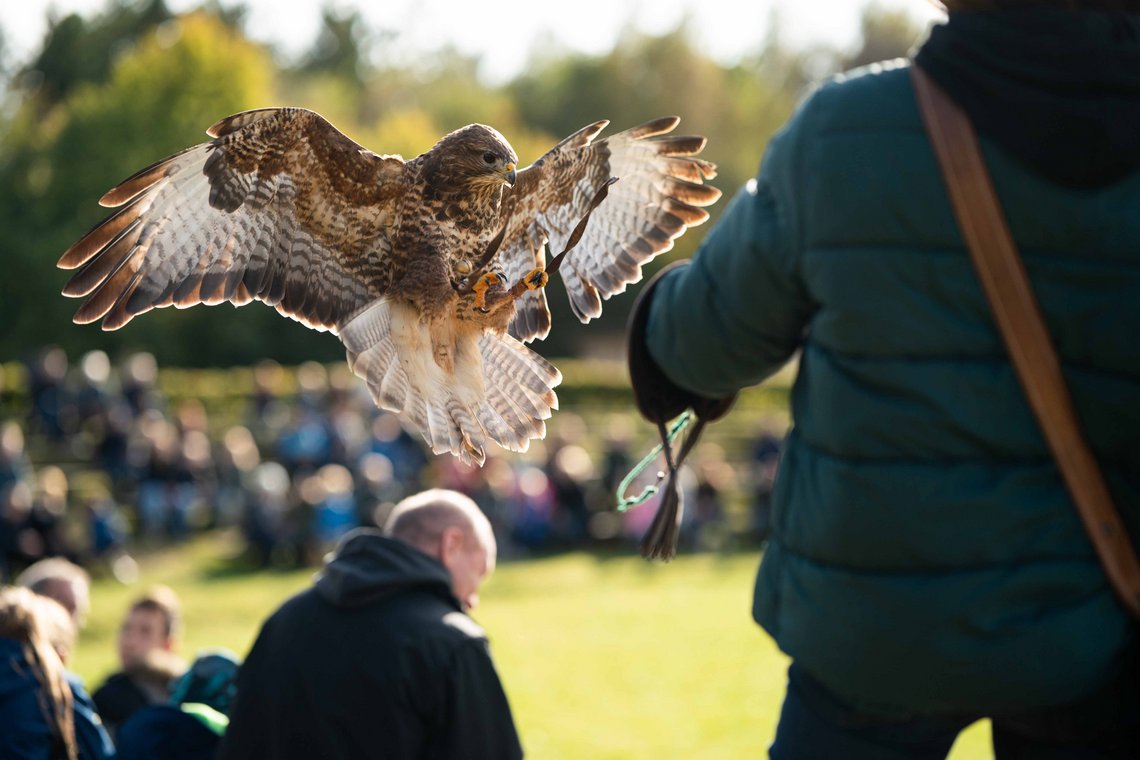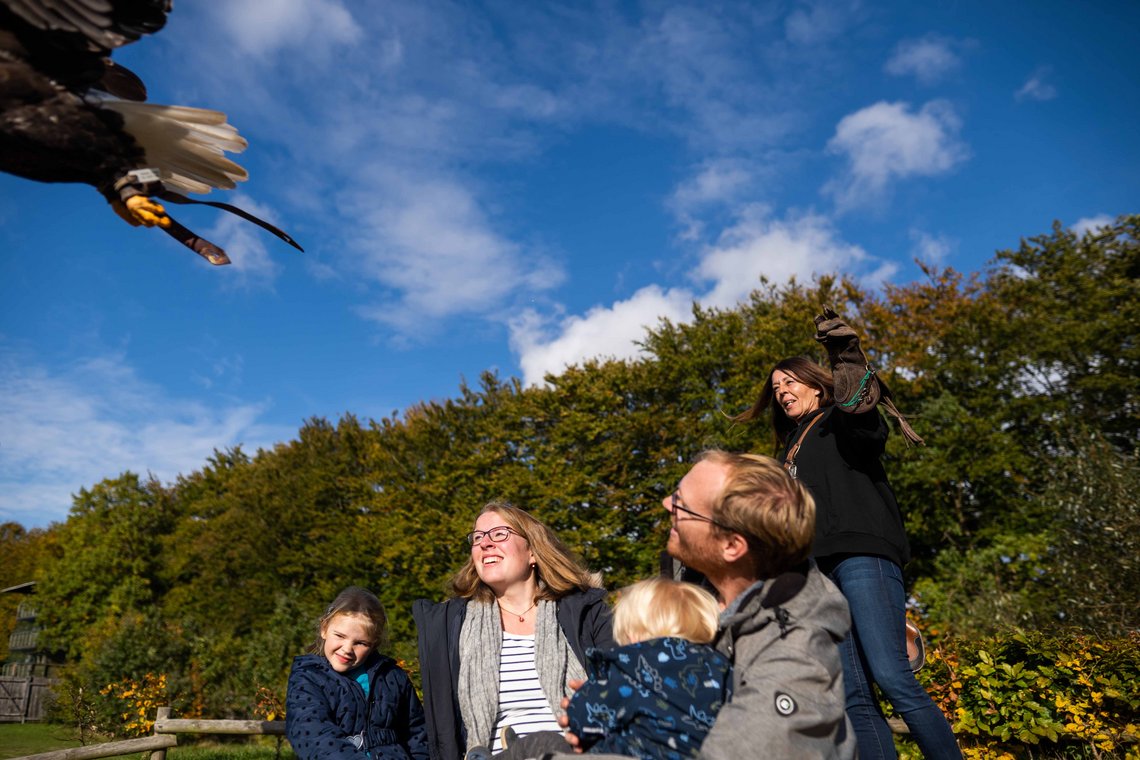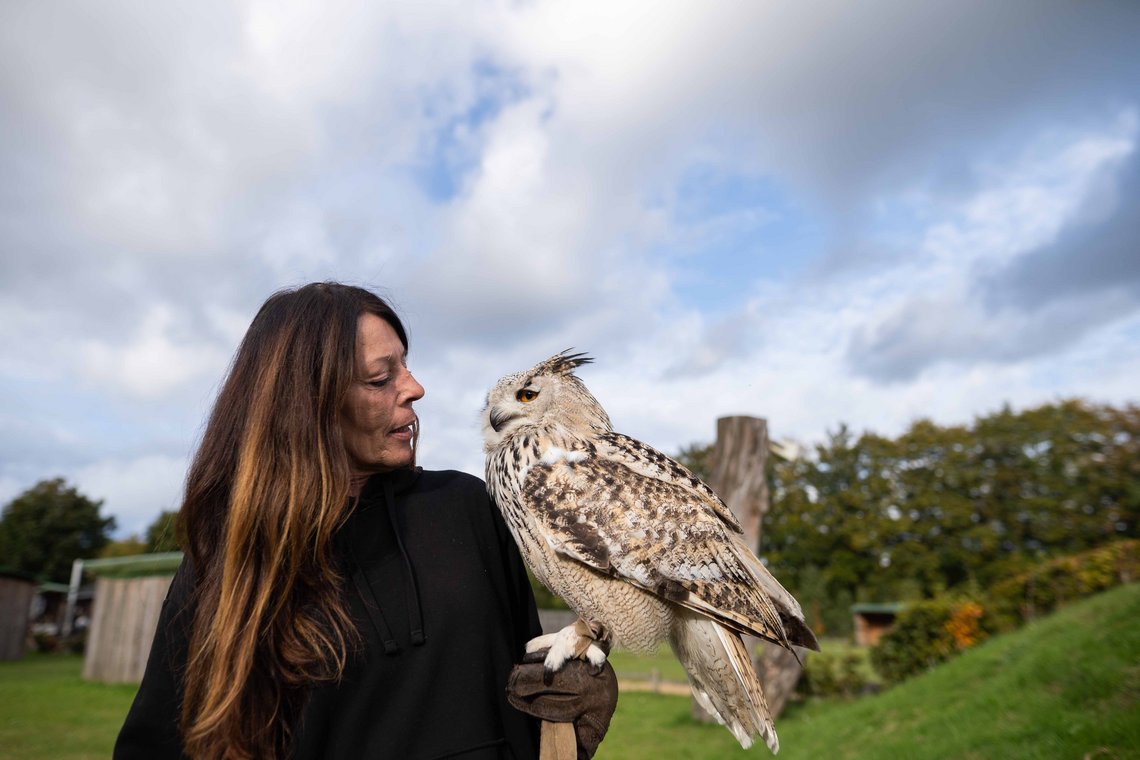Falconry in Trappenkamp
The origins of falconry go back many thousands of years. One woman who still upholds this tradition today is Alexandra Schütt. She is a falconer at the Schleswig-Holstein Bird of Prey Centre.
Alexandra Schütt lives for her birds. "They are my passion, my life," says the falconer. Alexandra lives with her partner Dietmar Damm on the grounds of the Erlebnsiwald Trappenkamp adventure forest, very close to her animals. "We don't have a closing time, and certainly no holidays." The 70 birds have to be cared for around the clock. On this last weekend in October, the team from the Schleswig-Holstein Bird of Prey Centre bid farewell for the winter with one last flight show. The ErlebnisWald Trappenkamp adventure forest, however, is open all year round. Here, young and old guests alike can experience and observe the indigenous animals at close quarters in all seasons and in different weather conditions and learn a lot about the animal species who live here. "Biology can be taught in a playful way," says Alexandra Schütt.
She herself has been a falconer for four years, and Dietmar Damm has been engaged in this profession for over 30 years. "When I trained as a falconer, I first had to obtain a hunting licence, but Dietmar generally goes hunting with the birds of prey during the winter. Golden eagles can attack a deer weighing 15-20 kilos.
The falconer takes us behind the scenes to the aviaries where the birds of prey live. We pass the bald eagle and golden eagle. Incidentally, the only difference between the two is the white feathers and their area of origin. Goshawks, desert buzzards and also an eagle owl belong to Alexandra and Dietmar's family. "The bond between falconer and bird of prey is very intense, especially with the birds that hatch out with us and that we raise by hand," says the expert.
Bambam, the strange screech owl who accompanies Alexandra everywhere she goes, doesn't betray the fact that he’s actually a wild bird. His leather strap, or “harness” in technical jargon, doesn't seem to bother him. "He's been wearing it since his first week. This is also the time when he flies onto the glove for the first time, gets used to the leather and we lure him with poultry and treats. The glove quickly becomes his home. He should feel safe here," says the bird of prey expert. The distance between the bird and the glove increases as the training progresses.
Alexandra trains the bird’s stamina and speed with the young Lanner falcon, because he has to demonstrate both in the flight show. It is fascinating to watch how the falconer uses the pole feather play training to lure the falcon to her again and again, where it grabs its food and takes to the skies again. "We fit a transmitter to the bird during these exercises, because if it does fly away, we can use it to find it again. This is because the birds become disorientated beyond a certain distance radius. People then call us when they spot it, and we bring it back," explains Alexandra.
The two passionate falconers also breed golden eagles, which don’t start breeding until they are five years old. The chicks generally hatch in April or May, and are so small that Alexandra puts them to bed in a cereal bowl in the evening. The adult parents, on the other hand, can later even eat a whole rabbit.
While Alexandra is still training the Lanner falcon, the first visitors are already coming to the arena to experience this last flight show of the season. The children are not the only ones who are excited about what awaits them in the next 20 minutes. We are also captivated as buzzard, hawk, eagle owl and at the end the golden eagle fly around the arena. "Birds of prey, especially eagles, are in fact energy savers. This means they only fly to hunt. They require sufficient stamina for this, which we train constantly," says Alexandra. But the two falconers also take great care that any shows are not too strenuous for the birds; they both love their animals far too much for that.
Text: Ulrike Pech





